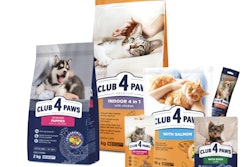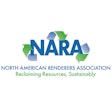
The pet industry is grappling with significant changes to the international trade landscape following the August 1 reciprocal tariff deadline, with new and evolving tariff regulations impacting the pet space.
In the inaugural session of American Pet Products Association's (APPA) "Trade Talks" webinar series, moderated by chief marketing officer Patrick O'Brien, trade expert Rebecca Rizzuti, owner of Progressive Trade Consulting, outlined the key developments impacting pet industry importers and manufacturers.
Post-August 1 deadline developments
While the August 1 deadline created urgency across the industry, several countries received extensions and implementation has been more nuanced than initially expected, said Rizzuti. "China received a 90-day extension, so that moved their deadline from August 1 to August 12. Then just this past Thursday, it was announced that Mexico would also receive a 90-day extension," Rizzuti explained.
However, new developments continue to emerge. Brazil faces additional scrutiny with a new 50% tariff announced in an executive order (EO). "There are some exceptions to products coming out of Brazil that are listed in the EO, but there's not very much focused on the pet industry from what we had taken a look at," Rizzuti noted.
The implementation timeline has also shifted, with most tariffs now taking effect August 7 rather than August 1. Importantly, companies with cargo already in transit receive some protection, said Rizzuti. "If you have cargo that is on the water on August 7 in the mode that is intended to come to United States, it will not be subject to tariffs until after it arrives, providing a grace period until October 5," she said.
Understanding the 40% transshipment penalty
The new 40% penalty for transshipment evasion has elevated compliance from a best practice to a business necessity, said Rizzuti, who emphasized that avoiding violations requires comprehensive supply chain knowledge.
"To avoid transshipment, you really do have to understand your supply chain," she said. "You have to understand what you're sourcing, whether your products are being manufactured through some complex supply chain, moving from country to country.
"Just because you start a product in one country and end the manufacturing process in another country, it doesn't necessarily mean that you actually change the country of origin to the final location," she added.
The stakes for non-compliance are high, with importers bearing full responsibility for accurate declarations. "You won't get a reprieve by saying you didn't have the information internally, or didn't have the skill set, because it's really your responsibility to have all that as an importer into the United States," Rizzuti warned.
Strategies for small- and mid-sized pet brands
For smaller companies lacking dedicated trade compliance teams, Rizzuti outlined practical first steps to mitigate risk and maintain competitiveness. The foundation begins with thorough product documentation.
"Something as simple as getting a product list or parts table, whatever you want to refer to it as in your company, having that information together, getting a list of product, determining what those components are for those products, or the basic descriptions of those products," she recommended.
Classification accuracy has become particularly critical as some new tariff structures depend on proper product categorization. Using the EU as an example, Rizzuti explained: "If your products are not classified appropriately, you actually won't even know what reciprocal tariff you're supposed to be paying, because the way that they've laid out the program is you need to take a 15% tariff and you need to deduct the duty that you are currently paying based on your classification."
Companies should also evaluate their product portfolios strategically, identifying which items might be candidates for domestic sourcing or temporary import delays while compliance processes are strengthened.
Resources for trade information
For companies seeking up-to-date trade information, Rizzuti recommended several sources. "The ones that I'm always looking at are whitehouse.gov, cbp.gov, and then, of course, I spend a lot of time on Truth Social monitoring the president's account. He puts out the notifications almost instantaneously."
APPA has also committed to regular communication, with monthly video updates at the beginning of each month and mid-month office hours where members can ask questions directly to trade experts.
The evolving trade landscape presents both challenges and opportunities for pet industry companies. As Rizzuti concluded, "This is a great opportunity to kind of re-evaluate and understand your business to set yourself up for success."

















